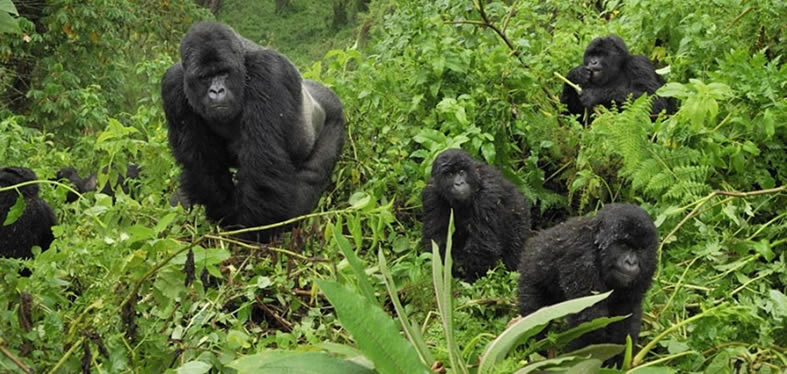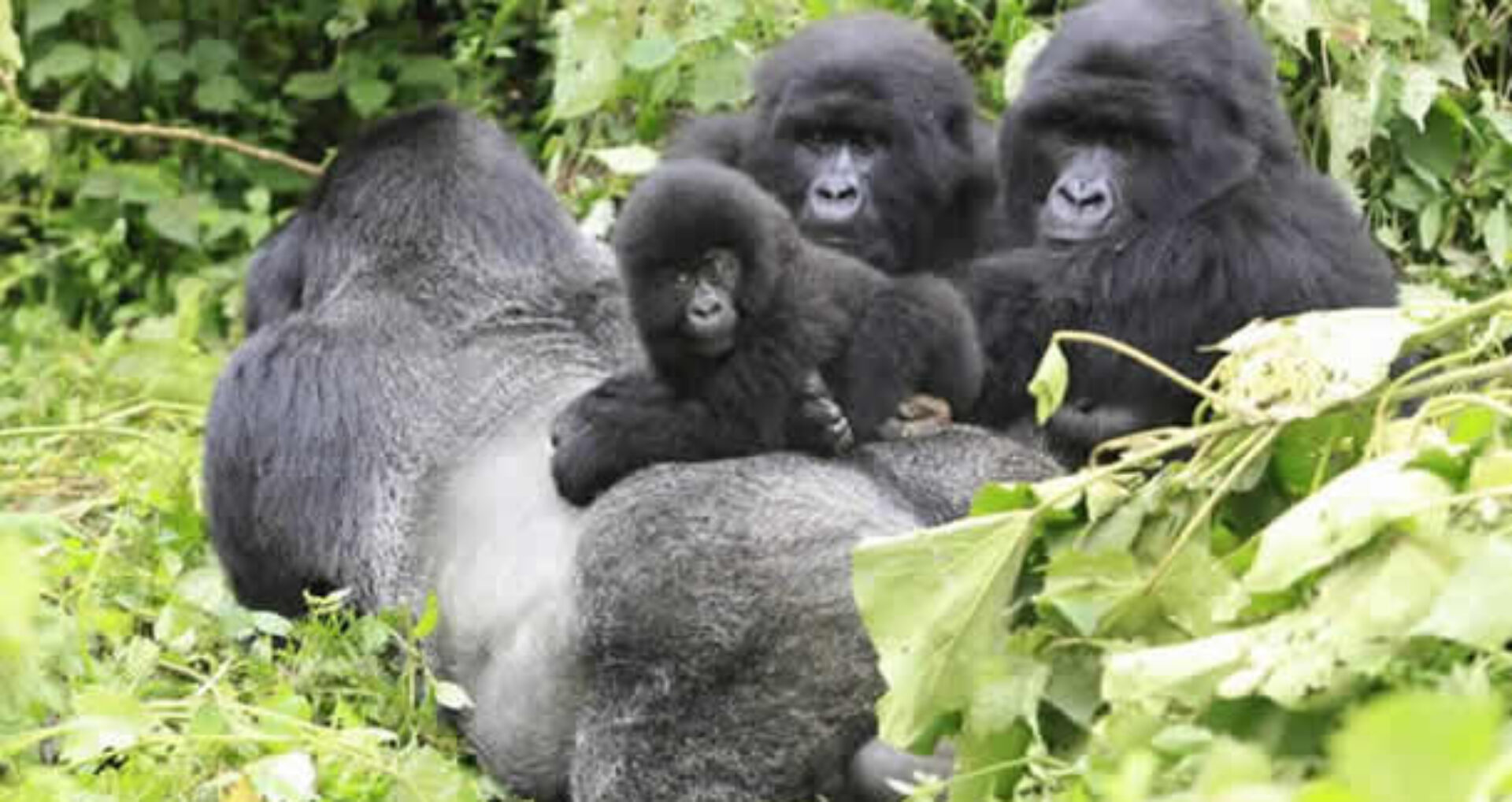Primate to visit on a Uganda Tour
Primates are mammals and human’s closest wild relatives that live in the tropical rain forests of different parts of the world Uganda inclusive. They live in groups of their closest relatives and usually move from one place to another exploring the tropical rain forests. They do so to search for fresh leaves, shoots, wild fruits and other edibles as well as new places for spending the night. Uganda has three major touristic primates species that include chimpanzees, mountain gorillas and golden monkeys. Many others like baboons, vervet monkeys, colobus monkeys are also present however are not given a lot of attention like the chimpanzees, golden monkeys and above all the mountain gorillas. Let’s briefly look at the three major magical primate species that usually catch the eyes of many tourists who visit Uganda for wildlife adventure safaris.
The Mountain Gorillas
Just as their name depicts, mountain gorillas live in the forested mountains in southwestern Uganda. They are among the most endangered primate species on earth with only about 900 of them remaining on the entire earth. Mountain gorillas lie in the ape’s family and are the largest apes species with a fully-grown mountain gorilla weighing over 200 pounds. Just like most primates, mountain gorillas are herbivores that predominantly feed on plants leaves, bamboo shoots, and other wild fruits that the forest has to offer.
In Uganda, mountain gorillas live in two national parks that include Bwindi impenetrable national park and Mgahinga gorilla national park. Bwindi impenetrable forest has the highest mountain gorilla population (about 450) that live in the three major sectors that the park has.
Mgahinga gorilla national park has one mountain gorilla group with 10 mountain gorillas including three male mountain gorillas also known as silverback.
Mountain gorillas are very peaceful animals but can be aggressive if disturbed. This is the reason why tourists are recommended to keep a reasonable distance away from the gorillas at least 7 meters. For conservation purposes, only 8 tourists are allowed to track one mountain family, which they spend with one hour. This one on one encounter with the mountain gorillas is very enjoyable and always leaves many astonished just yearning for more.
Mountain gorilla tracking does not require any experience however one should at least be in good physical shape since it’s done in the forested mountains. This activity however has an age limit and only persons who are 15 years and above are allowed to participate. Since mountain gorillas keep moving from one place to another, tracking them takes about 2 to 8 hours depending on their movement. To take part in mountain gorilla tracking, tourists have to first acquire permits from the Uganda Wildlife Authority personally or through a trusted tour operator. These permits are sold at $600 during the peak tourist season (June to August and December to February) and at $450 during the low tourist season (April, May and November).
Golden Monkey
These in Uganda only live in Mgahinga Gorilla Park situated in southwestern Uganda. They are also very rare primate species that can only be found in the Virunga volcanoes area. Their bodies are covered with golden fur and just like all other primates they also feed on leaves, shoots and also live in groups that range from 10 to 30.
Tracking golden monkeys also has an age limit and only persons who are 12 years old are the only ones allowed to track.
Chimpanzees
These also inhabit the vast tropical rainforest and Uganda has the highest chimpanzee population in her Kibale forest national park situated in western Uganda. For that reason, the park is referred to as the primate capital of east Africa and indeed it is a primate’s capital. Chimpanzees here are seen as they move easily over tree branches. Tourists here are given chances to be with the chimpanzees for the whole day in the chimpanzee habituation process.
Chimpanzees in Uganda can also be tracked in the Kyambura forest gorge and the Kalinzu forest in the queen Elizabeth conservation area and also in the Budongo forest reserve in the Murchison falls national park.


